Joining stitches 7 – 10
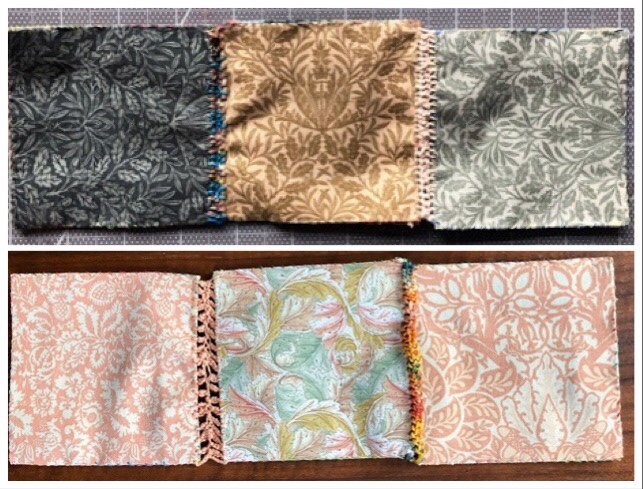
Joins 7 and 8 above, 9 and 10 below
Time to catch up on the joining sampler, having suddenly sped up this project. The end is in sight. If I don’t join more panels than 21 in groups of 3, I have four more joins to go. Here are joins 7 through 10. The quality of my work is not great because I’m agitated by the pandemic on top of my usual lack of care…excuses, excuses.
Join 7 – Randa Oum Jinan, YouTube
More needle lace from the YouTube playlist Bridging stitch in a variegated embroidery floss (6 strands) dyed by Deb Lacativa.
After stitching this for awhile, I concluded it was basically the same as Sushma’s randa #316. Sushma’s technique was much easier for me to follow and I made fewer mistakes. At the beginning of this join, I wasn’t looping the thread properly and it’s clear when I finally found the proper technique. The fill-in of thread started to look much better.
This join is thin and subtle on the folded edge. It looks more noticeable with the variegated thread, but would really blend in with a dark thread. It looks the same on both sides and folds readily. A good join to use if you want the focus on the page’s content, not the edges.

Join 8 – Two Pass Needle Lace, YouTube
Another randa join from the YouTube playlist Bridging stitch worked in natural color cotton/silk blend thread from Beautiful Silks in Australia.
This join is worked in two passes. I enjoyed the easy regularity of the first pass, creating a nice triangular edging. It started getting messier with the second pass. Big lumps appeared when I needed to change thread or lost my place.
The join creates a very thick fill-in and looks about the same on each side. It resists folding a little, but gives a very sturdy feeling and makes a statement on the folded edge. I could see using the first pass for a border.
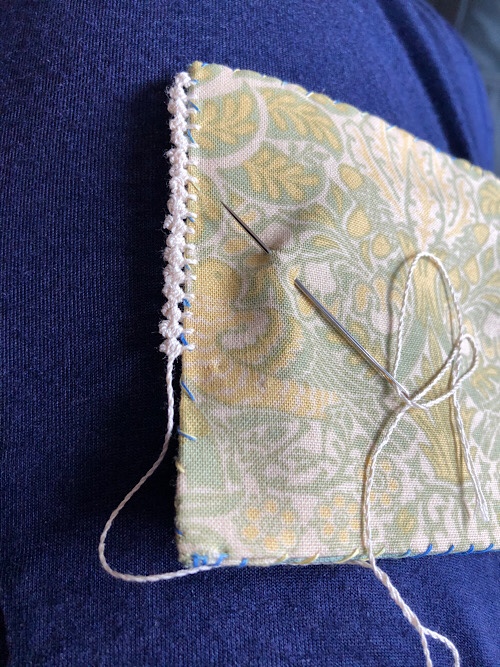
First pass
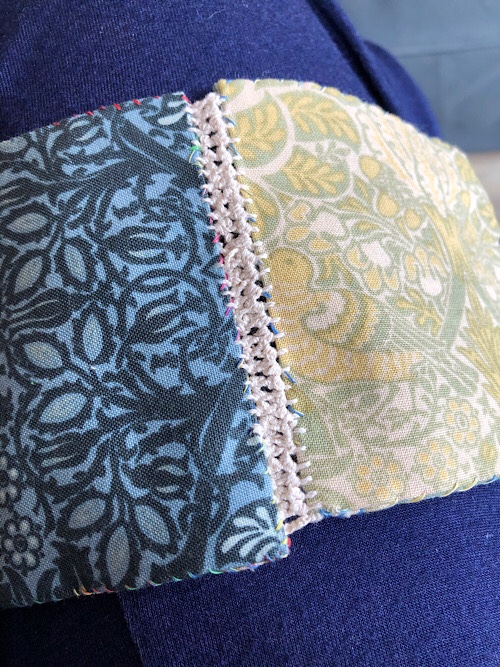
Completed, front
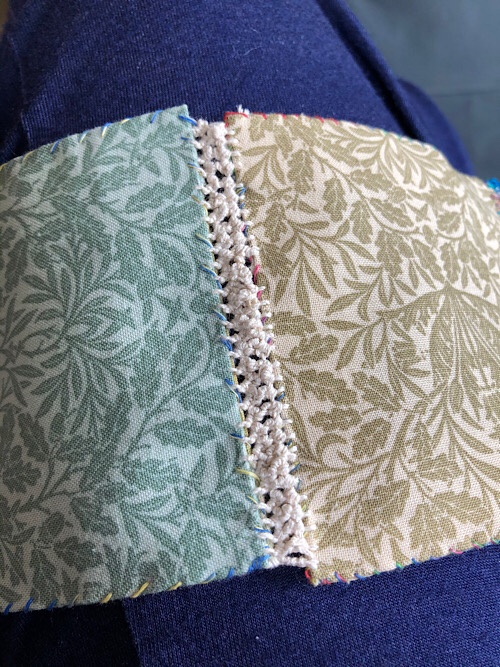
Completed, back
Join 9 – Sushma’s randa 338, YouTube
Back to Sushma’s YouTube channel for this interesting leaf-like join, worked in light coral embroidery floss (6 strands).
338-Beautiful joining of two edges with needle(Randa embroidery)
This join would look a lot more beautiful if it were even. I would have to get very disciplined and probably mark where the stitches should go to get more accuracy. It’s a thread eater and I had to change thread in the middle which added to the lumpiness. Even pinning the two sides down didn’t help keep the separation consistent.
The join folds readily in either direction and looks the same on front and back. It looks complicated but actually works up pretty fast.
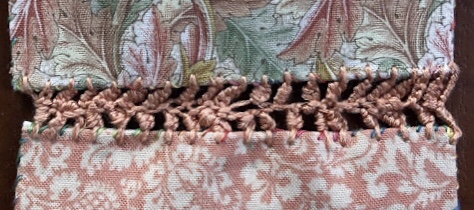
Front
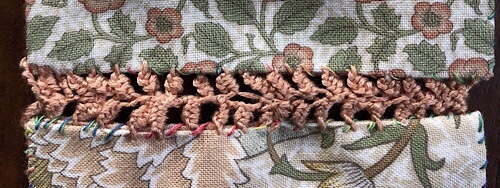
Back
Join 10 – Raised Chain Band
Raised Chain Band from Jean Wilson’s book Joinings, Edges, and Trims, page 78. Worked in two passes. The thread is variegated embroidery floss (6 strands) dyed by Deb Lacativa. On the first pass, it was tricky to get the stitches even. I changed my stitching method halfway through to try to improve accuracy. This caused the change in appearance on the back, as shown in the second photo. The second pass was super relaxing and fun, as it didn’t involve going through the cloth, but winding the thread around the existing stitches.
The join is noticeably raised. It was hard to get the line straight, which matters in the final look. It folds much more readily in one direction. And it looks very different on the back side. But I liked it a lot and I think it would be fun to try with different thread combinations.

Front

Back